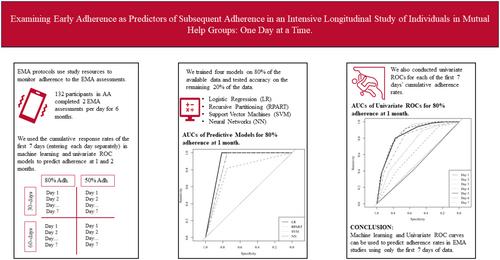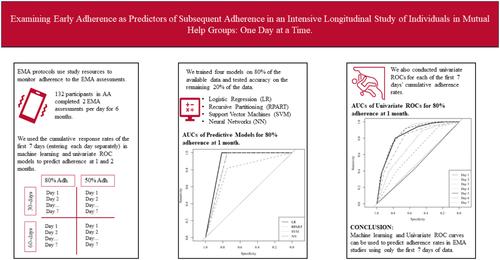Individuals with a substance use disorder complete ecological momentary assessments (EMA) at lower rates than community samples. Previous research in tobacco users indicates that early log-in counts to smoking cessation websites predicted subsequent smoking cessation website usage. We extended this line of research to examine individuals who are seeking to change their drinking behaviors through mutual support groups. We examined whether adherence in the first 7 days (1487 observations) of an intensive longitudinal study design could predict subsequent EMA protocol adherence (50% and 80% adherence separately) at 30 (5700 observations) and 60 days (10,750 observations).
Participants (n = 132) attending mutual-help groups for alcohol use completed two assessments per day for 6 months. We trained four classification models (logistic regression, recursive partitioning, support vector machines, and neural networks) using a training dataset (80% of the data) with each of the first 7 days' cumulative EMA assessment completion. We then tested these models to predict the remaining 20% of the data and evaluated model classification accuracy. We also used univariate receiver operating characteristic curves to examine the minimal combination of days and completion percentage to best predict subsequent adherence.
Different modeling techniques can be used with early assessment completion as predictors to accurately classify individuals that will meet minimal and optimal adherence rates later in the study. Models ranged in their performance from poor to outstanding classification, with no single model clearly outperforming other models.
Traditional and machine learning approaches can be used concurrently to examine several methods of predicting EMA adherence based on early assessment completion. Future studies could investigate the use of several algorithms in real time to help improve participant adherence rates by monitoring early adherence and using early assessment completion as features in predictive modeling.



